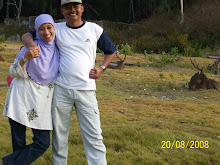Kujang
was one of the typical weapon of the West Java region, precisely in Pasundan
(Sundanese tatar). form of a weapon is quite unique in terms of its design, no
one equals this weapon in any area, this weapon in West Java. The absence of
the right words to mention the name of this weapon into the International
language, so the sense is synonymous with Cleaver "Chorizo" (=
sickles/Scythe), certainly is very much distorted because they look different
from any facet of arit with or sickle. Not the same also with
"scimitar" which shape is convex. And in Indonesia itself and sickle
or Scythe is actually called "chelurit" (celurit). Perhaps in
response to language barriers, the duties and obligations of Sundanese cultural
observer, and local print media in more intensive tatarsunda to publish this
weapon into a world of Cleaver International.
The origin of the term comes from the word Cleaver ' Kudihyang ' with
the root word ' Kudi, India ' and ' Lord '. ' Kudi, India ' is taken from an
ancient Sundanese have a sense of weapons that have supernatural powers as a
talisman, the milky way, as a repellent, for example to drive off the enemy or
avoid danger/disease. This weapon also kept possession, which is used to
protect the home from danger by putting it in a crate or a certain place inside
the House or put it on the bed (Hazeu, 1904: 405-406) whereas ' Hyang '
comparable with notions of Gods in some mythology, but for the people of Sunda
Hyang has the meaning and position above the gods, this is reflected in the
doctrine of "Dasa Prebakti" which is reflected in the script the
Sanghyang Torment Kanda Ng Karesian mentioned "God's consecrated
Hyang". In General, understand the inheritance of Kujang as having certain
powers that come from the gods (= Lord), and as a weapon, from ancient to the
present Kujang occupy one very special position among the people of West Java
(Sunda). As an emblem or symbol with the philosophical values niali contained
therein, Kujang is used as one of the few aesthetic symbol of organization and
governance.
PARTS
of KUJANG
Papatuk
(Congo) ; the tip of a sharp Kujang, pointless to incise or gouged.
Eluk
(Siih) ; angled-angled out from the back or on the side of the Kujang, pays to
the enemy's stomach ripped to shreds.
Waruga ;
the name bilahan (body) Kujang.
Mata ; small holes in the bilahan Kujang who at first holes were covered with
metal (usually gold or silver) or gemstone. But most of the rest found only
small holes. Use as a symbol of status phase of the wearer, at most 9 eye and
at least one eye, and there is also no-eyed Kujang, called "Blind Kujang".
Pamor ; streaks or spots on the body Kujang called Sulangkar or Leopard,
usually containing poison, pointless besides to embellish the kujangnya also to
turn off the enemy quickly.
Tonggong ;
at the side of a sharp reply backs Kujang, can to whittle also slicing.
Beuteung ; the sharp side of
abdomen, Kujang, the point is equal to its back part.
Tadah ;
small curved on the lower abdomen, Kujang, pointless to fend off enemy weapons
and spun off to bounce from their grasp.
Paksi ;
the tail section is a kujang taper to be inserted into the handle of the Kujang.
Combong ; the hole on the handle of the
Kujang, to pack the axis (tail Kujang).
Selut ;
ring on the upper end of the handle of kujang, point to strengthen the grip of
the handle Kujang on tail (Paksi).
Ganjal
(landéan) ; the name is typical of the handle (handle) Kujang.
Kowak
(Kopak) ; the typical name Holster kujang.








0 komentar:
Post a Comment